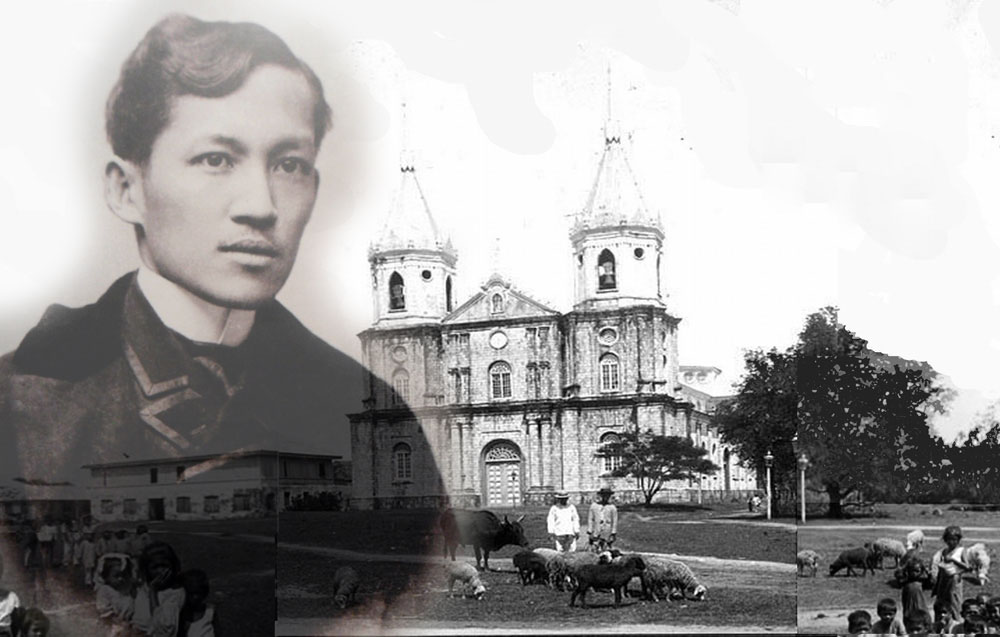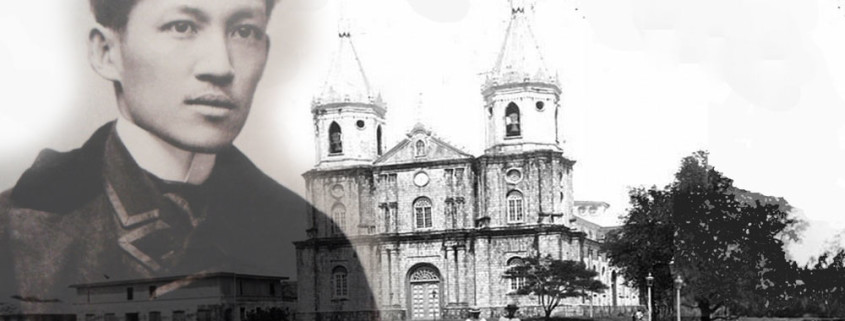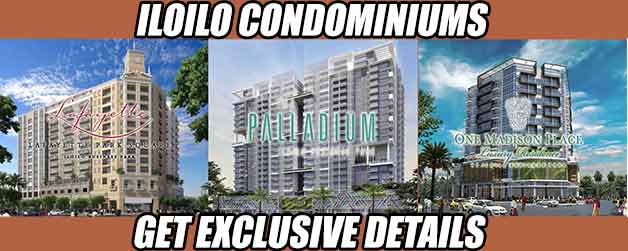Rizal’s short stint in Iloilo City
The Philippines’ national hero, Jose Rizal, visited Iloilo City in 1896. He had a record of this visit due to this admirable habit of jotting down immediately his observations and impressions of people and places wherever he was.
Sometime in 1896, Rizal, who was in Dapitan at that time as an exile, decided to apply as a military doctor for Cuba. At this period, the Cuban Revolution against the Spaniards was going on and he wanted to be fielded in that place for humanitarian purposes. Rizal really wanted to get out of Dapitan, considering that he had been there for four years already, and it can be speculated that his going to Cuba was a strategy by which he can leave the place. Fortunately, the Spanish government granted him the request.

Rizal Went to Molo Church
From Dapitan, Rizal took the streamer “España” in his trip to Manila and had delightful stopovers in Cebu and Dumaguete before arriving in Iloilo on August 4, 1896 (Zaide & Zaide 1894). Upon arrival at the Iloilo Port, Rizal observed that there were other boats anchored at the pier. Two of them were the “Cosmopolitan” and the “Taculin” that were about to start with their sail for Manila (Angayen 1973).
At that time, the Port of Iloilo was already the busiest in the Visayas accommodating domestic vessels as well as ocean-going liners from other parts of the world. These vessels unloaded cargoes of foreign goods and left loaded with sugar produced in Western Visayas. Iloilo, at this period, was also serving as the shopping center and cultural capital of the region.
The steamer “España” moored at the Iloilo Port for a day and Rizal took the opportunity to disembark to see the city. He boarded the waiting quiles at the pier and took the direction to Calle Real (now known as J.M. Basa Street). Calle Real was the shopping center of downtown Iloilo at that time and Rizal went to a bazaar that was located at present-day Regent Theater (Angayen 1973). The bazaar, owned by a Lebanese, occupied a wide space in a squat-looking building, similar to the other neighboring stores. The Lebanese store was selling stamps, buri hats, and other souvenir items. Rizal bought a presentable buri hat and took again a quiles for Molo or Parian.
When Rizal visited Molo, the place already had the reputation as “Athens of the Philippines,” being a center of learning. It had three schools at that time, while the town of Jaro had only two. Among the points of interest that impressed Rizal in Molo was the baroque church, also known as the “Women’s Church,” because all the almost life-sized figures of saints inside the church are those of women. He was also impressed of the drawings by young artists in Iloilo of famous Biblical personalities found on the walls of the church that were “mostly copies of Biblical scenes by Gustave Dore” (Zaide & Zaide 1984). The young artists had the family names Mabunay, Respal and Salas (Angayen 1973). He was also delighted to see the palatial house of Don Lucio Lacson, a wealthy businessman and sugar-planter, that stood at the corner of Calle Real de Arevalo and the street going to the bridge leading to Mandurriao. This grand house of Don Lucio was in front of the Molo Church separated only by the plaza.

Other than to see the place, especially the Molo Church, another reason why Rizal went to Molo was to see Don Raymundo Melliza, a close fried and a classmate in Manila and Madrid. Rizal took his lunch at the house of Don Raymundo and they talked about many things, one of which was Rizal’s decision to go to Cuba. Don Raymundo just arrived from Cuba where he served as a magistrate in the Supreme Court of that country. As such, he knew very well the situation in Cuba at that time (Angayen 1973).
From Iloilo, Rizal’s ship proceeded to Capiz (present Roxas City). After a brief stopover, it then sailed towards Manila via Romblon where it finally arrived in its final destination on August 6, 1896 (Zaide & Zaide 1984).
What happened after Rizal’s visit in Iloilo is already part of Philippine history. While on board the S.S. Castilla, where he was kept as a “guest”, the Philippine Revolution broke out on August 19, 1896. Rizal was eventually able to sail on board the “España” for Spain on September 3, 1896. This turned out to be his last trip outside of the Philippines. Even before he reached Europe, Rizal was put on house arrest on board the ship. He was only informed about the accusation against him when he arrived in Spain. The charge was that he was the mastermind behind the raging revolution in the Philippines at that time. Rizal was sent back to the Philippines, underwent a farce trial, and faced his martyrdom at the Luneta. His visit in Iloilo was, in effect, a brief peaceful lull before the tempest that took his young life on December 30, 1896.








Leave a Reply
Want to join the discussion?Feel free to contribute!